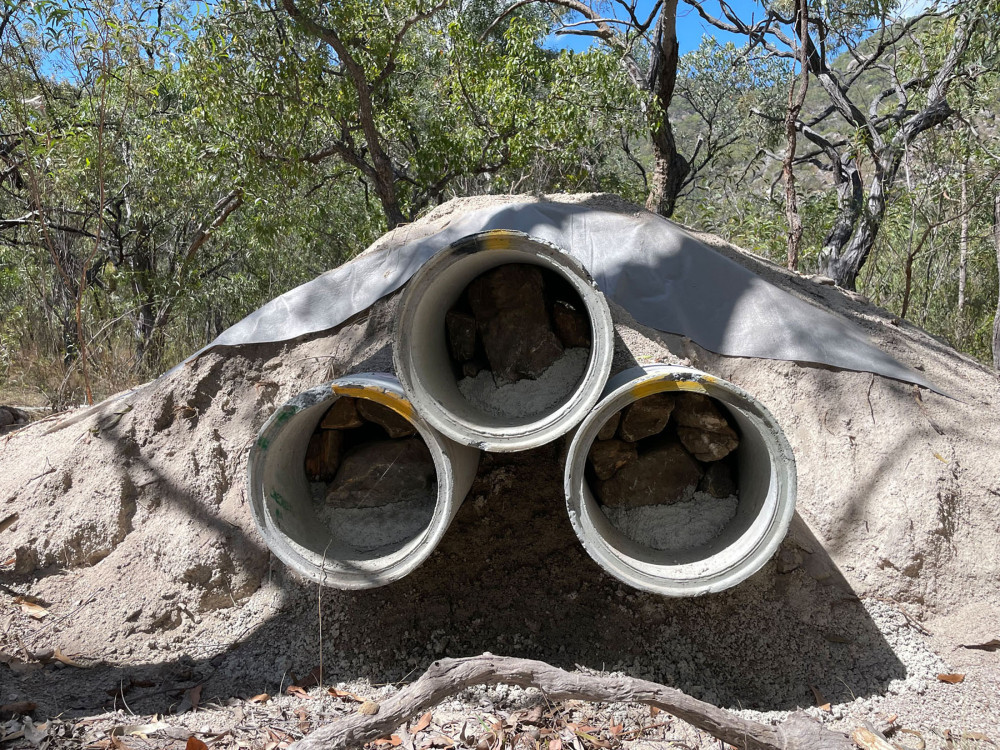General News
29 September, 2022
Dens for endangered northern quolls
HOMES are being built for endangered northern quolls in Far North Queensland to entice them back to what was once ‘quoll country’ in the days before cane toads.

Northern quolls all but disappeared from savannah land after the arrival of cane toads. Still, researchers say the small populations that survived and live in patches of rocky country above savannah land have learned to avoid eating them.
Now dens are being built around the edges of hillsides at Australian Wildlife Conservancy’s Brooklyn Wildlife Reserve, north of the Atherton Tablelands, to help increase quoll numbers and reconnect populations.
Terrain and Gulf Savannah NRMs and Australian Wildlife Conservancy are working together on the project with the help of Ground Creations, who are building the dens, Transport and Main Roads’ Edmonton to Gordonvale project and Mt Carbine’s EQ Resources Ltd, who are each providing some of the resources.
Terrain’s Dr Andrew Dennis said 12 trial dens were being built from pipes, rock and rubble.
“Artificial dens have only been used previously on rehabilitating mine sites’’ Dr Dennis said.
“With their work to guide us, as well as quoll and den research elsewhere, and all the background survey work done by Australian Wildlife Conservancy on where quolls are living in this area, we’ve come up with a new design that should suit the habitat here.

“Unlike mining land, these dens will be built within undisturbed areas. Their design is based on natural den characteristics such as depth, temperature, and humidity targets.”
The dens are being built just beyond known quoll habitat. If they successfully draw quolls back out into flat savannah land, they may be a valuable tool to reconnect isolated populations of quolls and improve the endangered species’ genetic health.
Dr Dennis said quolls suffered an 80 per cent decline in Queensland as cane toad populations increased. However, since then, they seem to have stabilised, with populations remaining in pockets where they have learned to avoid toads.
“If this trial works, the lessons learnt could be applied in the Northern Territory and in Western Australia, where there is an ongoing rapid decline’’ he said.
“We want to get northern quolls back on the savannah lands, reconnecting isolated populations and keeping genetics healthy while also performing their ecological role as apex predators.”
The project is supported through funding from the Australian Government.


